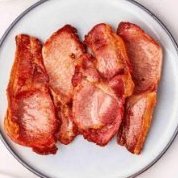-
Posts
10 -
Joined
-
Last visited
Health Deliver's Achievements
-
Yesterday Thai PBS reported a rabies alert for several areas in and around Bangkok, including Nong Bon, Dok Mai, Prawet, On Nut, Phatthanakan, Thap Chang, Lat Krabang, Bang Na Nuea, Bang Chak, Bang Kaew, and Racha Thewa (plus a 5km radius). 👉 Rabies is a fatal but preventable disease. It spreads through the bite or scratch of infected animals, most commonly stray dogs or cats. Once symptoms appear, it is almost always fatal — which is why prevention and fast response are critical. What you should know: Avoid contact with stray animals in the alert areas. If bitten or scratched: Wash the wound immediately with soap and running water for at least 15 minutes. Apply antiseptic. Seek medical care immediately for vaccination (post-exposure treatment). People at higher risk (expats, children, outdoor workers, travellers) should consider pre-exposure vaccination for extra protection. HealthDeliver Can Help ✅ Pre-Exposure Rabies Vaccination – available in all our Bangkok clinics and via in-home service. ✅ Post-Exposure Rabies Vaccination – immediate treatment plans if you’ve been bitten or scratched. ✅ Convenient locations: Nana (Soi 5), Asoke (Soi 23), Sathorn (Suan Phlu). ✅ Home visit option: Our team can come to you anywhere in Bangkok. 📞 To book your rabies vaccination or urgent care after an animal bite, contact HealthDeliver.Asia or call our patient experience team directly. Protect yourself and your family — rabies is preventable, but only if treated in time.
-
- 2
-

-

-
Good rule of thumb: don’t guess—measure. If you’re worried about prediabetes, the quickest way to clarity is: HbA1c (3-month average), fasting glucose, and (if still unclear) a 2-hr OGTT. Night-time urination isn’t specific—also check PSA/BPH, hydration, and meds/caffeine. Lifestyle beats ‘miracle teas’: steady fiber + protein, fewer refined carbs late at night, regular activity, and sleep. At HealthDeliver, we can do in-clinic or at-home blood tests, set up a short CGM trial (2 weeks) to see which foods spike you, and have a doctor review results with a simple action plan. If labs are already normal, we’ll help look for non-glucose causes (prostate, sleep, meds).
-
Constipation can have a lot of triggers — iron supplements, low fibre, low hydration, or even reduced gut motility with age. Vegan fibre tablets or prunes work for some, but the basics often help most: more water, regular movement, and a mix of soluble + insoluble fibre (vegetables, fruit, whole grains). If it’s ongoing, a simple blood test and stool check can rule out nutrient issues or underlying gut problems. At HealthDeliver we can do these in-clinic or at home, then review results with a doctor to suggest the right diet or treatment plan
-
Those night sweats/dizziness after a sweets-heavy buffet can be from a sugar spike and rebound dip (reactive hypoglycemia) or sometimes blood pressure swings. A quick way to check is with a fasting blood sugar (FBS) and HbA1c at a lab, plus a home glucometer for a week (fasting, 2 hrs after meals, and when you feel off). Food-wise in Thailand, keep it simple: grilled meats or soups with veg, salads with less sugar/sauce (mai sai nam-tan), small rice portions, and light evening snacks like yogurt + nuts. Avoid big sugary meals late at night. At HealthDeliver, we can arrange in-clinic or at-home blood tests, provide a clear 7-day monitoring plan, and have our doctors review your results with tailored advice. That way you’ll know whether it’s blood sugar, blood pressure, or something else
-

Can you catch diseases from toilet seats?
Health Deliver replied to CatCage's topic in The Wellness Zone
Most microbiologists agree the risk of catching anything directly from a toilet seat is extremely low. The skin is a good barrier, and most germs don’t survive long on a dry surface like plastic or porcelain. Where people do pick things up is more often from touching surfaces (flush handles, door locks, taps) and then touching their mouth, eyes, or a small cut. That’s why handwashing after using the toilet is far more important than balancing on the seat or covering it in paper. The exceptions are if there’s visible fresh fluid, or if someone has an open wound in contact with the surface — but for the average healthy person, the toilet seat itself isn’t the main risk. Good hand hygiene really is the key. -
Really interesting thread. A few thoughts that might help: About the pink salt change: Pink Himalayan salt is still mostly sodium chloride. The trace minerals are tiny and unlikely to drive BP changes. Two things that can explain your lower readings: (1) you’re more hydrated from the salted water, and (2) you’ve tightened your routine (resting before checks, taking readings more consistently). If BP is trending down, great — but generally adding salt isn’t a standard BP strategy. How you measure matters (a lot): Sit quietly 5 minutes, feet on floor, back supported, arm at heart level, no talking, 2–3 readings 1 minute apart and average them. Try a few times a week, same time of day. If you want to rule out “white coat” effects, home monitoring or a 24-hr ambulatory monitor is very useful. Eggs, butter & cholesterol: Dietary cholesterol from eggs has a modest effect for most people, but saturated fat (e.g., lots of butter) can raise LDL in some. If you enjoy eggs, you might balance with other fats (olive oil, avocado, nuts) and keep an eye on your lipid panel rather than guessing. Intermittent fasting (IMF): Can help weight and insulin sensitivity even with small kilo changes. The BP impact varies; sleep, stress, sodium/potassium balance, and exercise often move the needle more. Supplements & cannabis: Turmeric/ginger/garlic/cinnamon and magnesium are generally safe for many, but they can interact with meds (your ACE inhibitor/“Anapril”), and garlic/turmeric can affect bleeding risk at higher doses. Edible cannabis can lower BP in some and raise heart rate in others — worth flagging to your doctor. When to check a bit deeper: If BP drops too low (consistently <90/60) or you notice dizziness/blurred vision/fainting, get a review. A sensible work-up can include electrolytes, kidney function, fasting glucose/HbA1c, lipids, thyroid and, if risk is higher, a calcium score discussion. Also consider sleep apnea if snoring/daytime sleepiness is a thing — it’s a sneaky BP driver. Lifestyle nudges that reliably help BP: Regular aerobic + light resistance training, good sleep, moderating alcohol, aiming for ~5 g salt/day (unless your clinician advises differently), and getting enough potassium from food (leafy greens, bananas, beans) — potassium-rich foods help counter sodium’s effect. Bottom line: your recent readings (around 113/72, 65 bpm) are solid — just keep monitoring with good technique and loop your doctor before making bigger medication or supplement changes. If anyone wants it, we’re happy to share a simple BP-at-home checklist and a one-page “what labs to ask for”—no strings attached.
-

The Morning Mistake That Can Spike Heart Attack Risk
Health Deliver replied to Rimmer's topic in The Wellness Zone
That’s a really interesting share — mornings definitely put extra strain on the cardiovascular system, and habits like skipping breakfast can make things worse. The data on higher risk between 6 a.m. and noon is especially important for people already managing blood pressure, cholesterol, or diabetes. For anyone in Bangkok looking at ways to reduce long-term risks, lifestyle changes go hand in hand with regular health checks. We recently put together an article on the role of early screenings and medical supervision in preventing heart issues: Weight Loss Medications Available in Bangkok. While it focuses on metabolic health, it also touches on the importance of combining medical support with daily routines for better outcomes. -
It’s true that medication alone isn’t the full answer. High blood pressure can be influenced by genetics, diet, sleep, stress, and lifestyle — so tackling it usually needs more than just a pill. That’s why regular monitoring and honest conversations with a doctor make such a difference. A medical professional can help put together the right plan for each person, whether that includes medication, dietary changes, exercise, or stress management. For most people, the best results come from looking at the whole picture, not just one solution.
-
GLP-1 medications have become more widely available in Bangkok over the past few years. These include options such as Ozempic, Wegovy, Mounjaro, Saxenda, and Rybelsus. They differ in cost, side effects, and whether they’re taken as injections or tablets. It’s important to know that all of these are prescription-only and should be used under medical supervision. They usually work best when combined with changes to diet and lifestyle, rather than as a standalone solution. For anyone interested in a deeper overview, here’s one of our blogs that covers the topic in more detail: Weight Loss Medications Available in Bangkok
-
💊 Comparing Weight Loss Medications in Bangkok Mounjaro, Ozempic, Wegovy, Saxenda, and Rybelsus: What You Need to Know Weight loss medications in Bangkok now include modern GLP-1 treatments like Ozempic, Wegovy, Mounjaro, Saxenda, and Rybelsus. These vary by effectiveness, side effects, cost, and form (injection vs. tablet). All require medical supervision and are most effective when combined with diet and lifestyle changes. 🔬 How These Medications Work Most modern weight loss drugs mimic or enhance gut hormones that regulate hunger, digestion, and insulin response. They: Slow gastric emptying Reduce appetite via brain signaling Improve insulin function (especially for Type 2 diabetics) GLP-1 receptor agonists (like semaglutide or liraglutide) are now considered the gold standard for prescription weight management. 📋 Medication Comparison Overview Medication Active Ingredient Format Frequency Main Use Avg. Weight Loss Ozempic Semaglutide Injection Weekly T2 Diabetes / WL 5–10% Wegovy Semaglutide Injection Weekly Chronic WL 10–15% Mounjaro Tirzepatide Injection Weekly T2 Diabetes / WL 15–20% Saxenda Liraglutide Injection Daily Chronic WL 5–10% Rybelsus Semaglutide Oral Tablet Daily T2 Diabetes / WL 3–5% 🧠 All work best with exercise and calorie reduction. 🔎 At a Glance: Each Medication Ozempic (Semaglutide) 🩺 For: Type 2 diabetes & weight loss 💉 Weekly injection ✅ Slows digestion, lowers appetite ✅ Moderate to significant weight loss ⚠️ Common side effects: nausea, bloating, constipation 📌 Best for: patients with diabetes or early obesity Wegovy (Semaglutide) 🧪 For: Chronic weight management 💉 Weekly injection (higher dose than Ozempic) ✅ Same GLP-1 mechanism, stronger weight loss ✅ Approved specifically for obesity ⚠️ GI side effects common early 📌 Best for: long-term non-diabetic weight loss Mounjaro (Tirzepatide) 🧬 Dual-acting: GLP-1 + GIP 💉 Weekly injection ✅ Greater appetite suppression ✅ Strongest weight loss in clinical trials (up to 20%) ⚠️ GI upset, higher cost 📌 Best for: patients needing aggressive weight reduction Saxenda (Liraglutide) 📅 Daily injection ✅ Helps you feel full sooner and longer ✅ Approved for obesity (with or without diabetes) ⚠️ Requires daily use, side effects like nausea or dizziness 📌 Best for: patients who prefer daily rhythm or can't tolerate semaglutide Rybelsus (Oral Semaglutide) 💊 Once-daily tablet ✅ First oral GLP-1 option ✅ Mild to moderate weight loss ⚠️ Less effective than injectables 📌 Best for: needle-averse patients with mild weight goals ⚖️ Am I Eligible? You may qualify for prescription weight loss medications if: ✅ BMI ≥ 30, or ✅ BMI ≥ 27 with conditions like diabetes, high blood pressure, or cholesterol ✅ No history of thyroid cancer, pancreatitis, or certain drug sensitivities Your doctor will also consider: Current medications Liver/kidney function Glucose and lipid profiles Family medical history 🚨 Common Side Effects Most GLP-1 drugs cause: 🤢 Nausea 💩 Diarrhea or constipation 😣 Bloating or fullness 😬 Headache or fatigue Serious but rare risks: ⚠️ Pancreatitis ⚠️ Gallbladder issues ⚠️ Thyroid tumors (boxed warning) Regular monitoring is essential. 💪 Best Results Come From... 🏃 Exercise + 🍽 Diet + 💉 Medication = 🔥 Results Weight-loss injections are tools, not shortcuts. Long-term success depends on: Building healthy habits Ongoing medical support Tracking progress and adjusting dose 📅 How to Start in Bangkok Book a consultation at HealthDeliver Clinic Asoke, Nana or Sathorn Lab tests: glucose, cholesterol, thyroid Choose medication with your doctor Begin treatment + follow-up plan Option: home delivery of medication 📦 📞 Call, 📲 book online, or 💬 use telemedicine services. ✅ Final Thoughts All five medications—Ozempic, Wegovy, Mounjaro, Saxenda, and Rybelsus—offer safe, effective weight loss support under medical guidance. The best choice depends on your body, goals, and preferences. 💬 Talk to a doctor. Don’t DIY. 🎯 Aim for long-term health, not quick fixes. 🏥 About HealthDeliver Clinic HealthDeliver Clinic is a full-service medical center and online pharmacy based in Bangkok, specializing in weight loss, diabetes, and wellness care. We offer: Personalized treatment plans GLP-1 medications like Mounjaro, Ozempic & Saxenda Medication refills and nationwide delivery English-speaking doctors & telemedicine support 📍 Visit Us in Nana, Asoke or Sathorn 📲 Book Online
-
- 3
-

-










